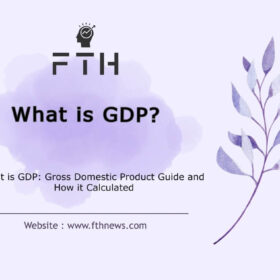
Straddle Strategy: Mechanics, Applications, Pros & Cons
The Straddle Strategy stands out as one of the most renowned trading techniques in the forex market, particularly in uncertain market conditions. This powerful strategy is widely used by experienced traders to navigate range markets and capitalize on significant price movements triggered by important news events. In this comprehensive guide, we will delve into the intricacies of the Straddle Strategy, its steps, applications, advantages, and disadvantages.
Understanding the Straddle Strategy:
The Straddle Strategy is a sophisticated approach that requires traders to strategically position themselves on both sides of the market. To execute this technique effectively, traders employ buy stop and sell stop conditional orders, creating a dynamic trading scenario that aims to capitalize on potential price fluctuations triggered by market uncertainty.
Navigating Market Uncertainty:
In the realm of the Straddle Strategy, traders find themselves in a unique position, ready to pounce on significant market movements regardless of the direction. This dual-pronged approach is particularly potent in uncertain market conditions where the trajectory is unclear. By strategically placing buy stop and sell stop orders, traders effectively straddle the market, anticipating a breakout in either direction.
Precision in Conditional Order Placement:
The success of the Straddle Strategy hinges on the precision with which conditional orders are strategically set. Traders must carefully analyze the market dynamics, identifying key levels where a breakout is likely to occur. The buy stop order is strategically placed above the highest high point of the range, while the sell stop order finds its place below the lowest low point. This meticulous positioning increases the probability of profiting from a breakout, as these conditional orders act as triggers for market entry.
Maximizing Probability for Profit:
Setting conditional orders strategically is not just about predicting market direction but also about understanding the market’s potential reactions to key events. Traders employing the Straddle Strategy aim to maximize the probability of profit by positioning themselves to ride the wave of a breakout triggered by significant news, economic announcements, or other market-moving events. It’s a delicate dance where the timing and execution of conditional orders play a crucial role in optimizing returns.
The Art of Riding Breakouts:
At its core, the Straddle Strategy is an art form that allows traders to ride the waves of market volatility. By being present on both sides of the market, traders ensure they are in a prime position to seize opportunities presented by rapid and often unpredictable price movements. The strategy leverages the uncertainty in the market to the trader’s advantage, making it a favored method for those adept at reading the market’s pulse.
In conclusion, mastering the Straddle Strategy involves not only understanding the mechanics of buy stop and sell stop orders but also developing an intuitive sense for market uncertainty. Traders employing this strategy skillfully position themselves to harness the power of breakouts, making it a valuable technique in the arsenal of those navigating the complex landscape of financial markets.
How to Create the Straddle Strategy
Mastering the Straddle Strategy in forex requires a strategic approach that encompasses several key steps. Let’s delve into the intricacies of each stage, providing a comprehensive guide for traders seeking to capitalize on market volatility.
1. Identify the Market Moving Event:
The first step in executing a successful Straddle Strategy is to meticulously identify the market-moving event. This could range from economic announcements to significant geopolitical developments. Traders need to stay abreast of the latest news and events that have the potential to sway the market in either direction. A well-informed decision at this stage lays the foundation for a successful straddle.
2. Select a Currency Pair:
Once the market-moving event is recognized, the next crucial step is to select a currency pair that aligns with the anticipated volatility. Choosing a pair with a history of substantial price movement during similar events enhances the likelihood of a profitable outcome. Traders should consider the unique characteristics of each currency pair to make an informed decision.
3. Setting up Dual Transactions:
With the event identified and the currency pair selected, traders move on to the core of the Straddle Strategy – setting up dual transactions. This involves the simultaneous placement of buy and sell orders at strategic points, often in the form of a doji. The doji serves as a visual representation of market indecision, reflecting the uncertainty that the Straddle Strategy aims to exploit.
4. Wait for the Desired Event:
After executing the dual transactions, patience becomes a virtue. Traders must wait for the anticipated market-moving event to unfold. This period requires a keen eye on market developments and an unwavering commitment to the predetermined strategy. The market may react swiftly, and being prepared for sudden movements is integral to the success of the Straddle Strategy.
5. Manage Transactions:
As the desired event unfolds, managing transactions becomes paramount. Traders should implement effective risk management strategies to navigate the dynamic market conditions. This includes setting stop-loss and take-profit orders to limit potential losses and secure profits. Managing transactions in real-time demands a strategic mindset and the ability to adapt to evolving market scenarios.
Enhancements to Consider:
- Analyzing Historical Data: Incorporating historical data related to similar events can provide valuable insights into potential market reactions.
- Utilizing Technical Analysis: Combining the Straddle Strategy with technical analysis tools can enhance the precision of entry and exit points.
- Continuous Learning: Staying informed about market dynamics and continuously refining the understanding of potential catalysts contributes to long-term success.
In conclusion, the Straddle Strategy is a dynamic process that demands a comprehensive understanding of market events and the ability to execute strategic transactions. By following these steps and considering enhancements, traders can position themselves for success in the ever-evolving landscape of the forex market.
Applications of Straddle Strategy:
The Straddle Strategy is a versatile trading approach that finds its efficacy in various market conditions. Traders adept at deploying this strategy strategically can navigate the complexities of the financial landscape. Let’s explore the diverse applications of the Straddle Strategy beyond its fundamental principles.
1. News Trading: Riding the Volatility Waves
Enhancing Profits During Important News Releases
The Straddle Strategy truly shines when applied to news trading. As major news events unfold, markets often experience heightened volatility. Traders utilizing the Straddle Strategy position themselves on both sides of the market, ready to capitalize on the significant price movements triggered by breaking news. This approach minimizes the impact of market uncertainty, allowing traders to profit regardless of whether the market moves up or down in response to the news.
Enhancements to Consider:
- Incorporating Economic Calendars: Use economic calendars to identify upcoming news releases and plan straddle executions accordingly.
- Monitoring Market Sentiment: Gauge market sentiment leading up to news events to refine entry points.
2. Consolidation Markets: Breaking the Stagnation
Navigating Stagnant Markets with Buy and Sell Stop Orders
In markets characterized by consolidation or stagnation, the Straddle Strategy serves as a valuable tool for traders. By strategically placing buy and sell stop orders, traders position themselves to capture potential price movements when the market eventually breaks out of its range. This application transforms the Straddle Strategy into a proactive approach for traders seeking opportunities even in periods of low volatility.
Enhancements to Consider:
- Analyzing Historical Price Patterns: Study historical price patterns during consolidation to refine entry points.
- Adjusting Order Distances: Modify the distance between conditional orders based on the specific characteristics of the consolidation period.
3. Risk Management: Strategically Navigating the Unknown
Managing Trading Positions with Precision
Beyond its role in exploiting market movements, the Straddle Strategy excels as a risk management tool. Traders can strategically manage their positions by setting minimum and maximum trailing stops. This enables them to limit potential losses while securing profits, ensuring a balanced and controlled approach to trading.
Enhancements to Consider:
- Dynamic Trailing Stops: Adjust trailing stops based on evolving market conditions to optimize risk-reward ratios.
- Combining with Other Risk Management Tools: Integrate other risk management tools, such as position sizing and diversification, for a comprehensive risk mitigation strategy.
In conclusion, the Straddle Strategy extends its prowess beyond its fundamental principles, offering traders a versatile toolkit for navigating diverse market scenarios. By understanding and applying these enhanced strategies, traders can harness the full potential of the Straddle Strategy in their pursuit of consistent and profitable trading outcomes.
Key Factors to Consider: the Dynamics of the Straddle Strategy
Mastering the Straddle Strategy involves not only understanding its core principles but also factoring in key elements that influence its effectiveness. Traders must navigate the intricate dance of market dynamics, timing, and risk management to optimize their chances of success. Here are essential factors to consider when employing the Straddle Strategy:
1. Market Volatility: Harnessing the Power of Fluctuations
Straddle’s Sweet Spot in High-Volatility Markets
The Straddle Strategy thrives in environments where market volatility is heightened. High-volatility markets offer greater potential for significant price movements, providing the ideal conditions for the Straddle Strategy to capitalize on both upward and downward swings. Traders should assess current market conditions and choose strategic entry points when volatility is expected to surge.
Enhancements to Consider:
- Volatility Indicators: Leverage volatility indicators to gauge the intensity of market fluctuations.
- Adaptability to Changing Volatility: Adjust the Straddle Strategy approach based on evolving volatility levels.
2. Timing: Precision in Execution
Executing Orders Ahead of Market-Moving Events
Timing is paramount when implementing the Straddle Strategy. Traders must execute buy and sell orders strategically before the anticipated market-moving event. This proactive approach positions traders to ride the initial waves of volatility triggered by the event, maximizing the potential for profitable outcomes.
Enhancements to Consider:
- Anticipating Reaction Times: Analyze historical data to estimate market reaction times to specific events.
- Real-Time Monitoring: Utilize real-time market monitoring tools to execute orders swiftly as events unfold.
3. Risk Management: Safeguarding Capital in Uncertain Waters
Strategic Use of Stop-Loss and Take-Profit Orders
Effectively managing risk is at the heart of successful trading with the Straddle Strategy. Traders should integrate stop-loss and take-profit orders into their strategy to mitigate potential losses and secure profits. By setting predefined exit points, traders maintain control over their positions, safeguarding capital in the face of unforeseen market movements.
Enhancements to Consider:
- Trailing Stop Strategies: Implement dynamic trailing stops to adjust risk management in response to evolving market conditions.
- Position Sizing: Align position sizes with risk tolerance to achieve a balanced risk-reward ratio.
4. Economic Calendar: Staying Ahead of Market-Moving Events
Strategic Insights Through Event Awareness
The economic calendar emerges as an invaluable tool for traders employing the Straddle Strategy. Staying updated with major events and economic releases allows traders to anticipate potential market catalysts. By aligning their Straddle Strategy with the economic calendar, traders position themselves to capitalize on price movements triggered by fundamental events.
Enhancements to Consider:
- Event Impact Analysis: Evaluate the potential impact of specific economic events on different currency pairs.
- Forward Planning: Plan Straddle executions well in advance of significant events to avoid last-minute decision-making.
In conclusion, a nuanced understanding of market volatility, precise timing, effective risk management, and strategic use of the economic calendar are critical elements in maximizing the efficacy of the Straddle Strategy. Traders who master these key factors can navigate the complex terrain of financial markets with greater confidence and precision.
Navigating the Pros and Cons of the Straddle Strategy
The Straddle Strategy, with its unique approach to market dynamics, presents traders with a set of advantages and disadvantages. Understanding these aspects is crucial for traders to make informed decisions and tailor their strategies to their individual risk tolerance and experience levels.
Advantages of the Straddle Strategy
- Opportunity to Profit in Uncertain Market Conditions:
- The Straddle Strategy’s primary advantage lies in its ability to capitalize on market uncertainty. By positioning traders on both sides of the market, it opens the door to potential profits regardless of the direction in which the market ultimately moves. This adaptability proves especially beneficial during times of ambiguity, such as leading up to major news releases or significant events.
- Lower Risk Due to Positions on Both Sides of the Market:
- The inherent risk diversification of the Straddle Strategy sets it apart. Traders, by maintaining positions on both sides of the market, effectively spread their risk. Even if one leg of the strategy incurs losses, the potential gains from the other position can offset and minimize overall risk. This risk mitigation feature enhances the strategy’s appeal for traders seeking a balanced approach to market movements.
Disadvantages of the Straddle Strategy
- Complexity, Particularly for Novice Traders:
- The Straddle Strategy, while powerful, can be intricate and may pose challenges, especially for novice traders. Understanding when and how to execute buy and sell orders, along with the strategic placement of conditional orders, requires a nuanced comprehension of market dynamics. Novice traders may find the learning curve steep, necessitating careful study and practice before mastery.
- Educational Resources: Novice traders can benefit from educational resources, tutorials, and simulated trading environments to build proficiency before engaging with real capital.
- Start with Simplicity: Begin with simpler versions of the Straddle Strategy and gradually advance as confidence and experience grow.
- Higher Capital Requirement and Increased Transaction Costs:
- The Straddle Strategy’s demand for simultaneous buy and sell positions results in higher capital requirements and increased transaction costs. Since traders execute both legs of the strategy, transaction expenses are effectively doubled. This factor may pose challenges for traders operating with limited capital or those sensitive to transaction costs.
- Optimize Position Sizing: Calculate position sizes carefully to align with available capital and risk tolerance.
- Explore Fee Structures: Choose brokers with competitive fee structures to minimize transaction costs.
In conclusion, while the Straddle Strategy offers distinct advantages in uncertain market conditions and risk management, traders must weigh these against the complexities and potential costs involved. With careful consideration and a tailored approach, traders can leverage the strengths of the Straddle Strategy while mitigating its challenges for a well-rounded trading experience.
Real-World Example of a Straddle:
To illustrate the practical application of the Straddle Strategy, let’s consider a scenario involving an investor anticipating a major earnings announcement from a publicly traded company.
Scenario:
An investor closely follows a tech company poised to release its quarterly earnings report. Recognizing the potential for significant market movement in response to the announcement, the investor decides to implement a straddle strategy to capitalize on the anticipated volatility.
Implementation:
- Call Option Purchase:
- The investor purchases a call option at the current stock price, anticipating the possibility of a positive earnings surprise that could drive the stock price higher.
- Put Option Purchase:
- Simultaneously, the investor acquires a put option at the same stock price, preparing for the scenario where the earnings report may fall short of expectations, leading to a potential decline in the stock price.
Outcome:
- Positive Earnings Surprise:
- If the company reports better-than-expected earnings, causing the stock price to soar, the call option becomes profitable, compensating for the loss on the put option.
- Earnings Disappointment:
- Conversely, if the earnings report disappoints, resulting in a decline in the stock price, the put option becomes profitable, offsetting the loss on the call option.
This real-world example showcases the Straddle Strategy’s application in the context of earnings announcements. By strategically positioning themselves with both call and put options, the investor hedges against the uncertainty surrounding the earnings report, aiming to profit regardless of the stock’s direction post-announcement.
Enhancements to Consider:
- Historical Analysis: Conducting a historical analysis of the company’s stock behavior during past earnings announcements can provide insights into potential price movements.
- Implied Volatility Considerations: Factoring in implied volatility levels before the earnings release can aid in optimizing the straddle strategy.
Conclusion of the Straddle Strategy
Mastering the Straddle Strategy requires more than theoretical knowledge; it demands a practical understanding of market nuances and a strategic approach to execution. Traders can leverage the versatility of this strategy across various market conditions, whether navigating the forex markets or exploring options trading. By embracing uncertainty and incorporating precise risk management, traders empower themselves with a valuable tool that optimizes their chances of profitability in an ever-changing financial landscape.
FAQ
A straddle trade involves simultaneously buying a call and a put option with the same strike price and expiration date, anticipating significant price movement.
The straddle can be a good strategy in volatile markets or ahead of major events, offering the opportunity to profit from price swings, but it requires careful execution.
Buying a straddle is suitable when expecting a substantial price movement, like before earnings announcements or major news events.
Yes, you can lose money on a straddle. If the market doesn’t experience significant price movement, the combined cost of both options may result in a loss.














